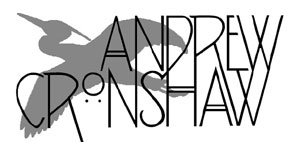
- Andrew Cronshaw website -
- Andrew Cronshaw MySpace -
- Cloud Valley Music website -
- Andrew Cronshaw website -
- Andrew Cronshaw MySpace -
- Back to Reviews Introduction page -
Written in Folk Roots issue 123, 1993
VARIOUS ARTISTS - Ensembles & soloists of the Folk Music
Department of Sibelius Academy, Helsinki
Kuulas Hetki
Olarin Musiikki OMCD 46 (1993)
VARIOUS ARTISTS
Setu Songs
Mipu MIPUCD 104 (1992)
The folk music department in existence for just 10 years at Finland's main music
institution isn't the dry, academic, straightjacketing thing that a person
conditioned by music schools might expect; in fact, it's probably unique in what
it does. To quote its founder and leading spirit Heikki Laitinen, "The most
important goals were to learn the old styles of playing and singing and to break
through all perceived limits to create the folk music of the future." In other
words, to create an avant-garde with roots gained by very intensive experience
in regional traditional techniques. Most folk music institutions collect and
study; few if any have such an emphasis on the actual creating of music and such
a goal, far in advance of mere "revival".
The course lasts about 6 years, and at present there are about 60 students and
50 or so teachers involved - the line between them is blurred, no-one ever seems
to really leave; they go off to perform or study a tradition, and come back to
teach or learn some more.
The CD Kuulas Hetki contains 15 tracks recorded
at the newly-rehoused department by Janne Viksten. Tellu Paulasto of Hedningarna
plays two Ostrobothnian polkas on fiddle; Maria Kalaniemi duets on 5 row
accordion with Maija Karhinen on 1-row, and also plays free-bass accordion with
Olli Varis on guitar; Arto Järvelä, of Salamakannel, JPP, Ampron Prunni and much
else, plays nyckelharpa and sings with Pinnin Pojat partner Kimmo Pohjonen's
mbira and vocals on a Tanzanian-inspired piece, and also joins Koinurit
colleague Olli Varis and Petri Hakala in a mandolin trio schottische; Pohjonen
gives a solo Swedish polska on harmonica; the revamped Pirnales, Uusi Pirnales,
contributes "straight-ahead dance music"; Anna-Kaisa Liedes (of the late Niekku,
as is Maria Kalaniemi) and Minna Raskinen appear in the vocal ensemble for a
game song from Setumaa. There's a goat's horn solo from Virpi Forsberg; a Martti
Pokela kantele piece played by Arja Kastinen; two items featuring Outi
Pulkkinen's jouhikko, one with the group Turkilla Prostitus and some promising
wildness and the other the album's title track for jouhikko and harmonium; a
tune from Henan on san-xian played by the department's Chinese student, Tan
Longjian, and a two part composition for voices and kanteles by Timo Väänänen.
There's nowhere else doing what the Department does;
and what are evolving are forms of music not found anywhere else, not bound by
the restrictions of commerciality, the folk, rock, jazz, classical or any other
scene. It's still early; there's much more to come, but on the evidence of this
CD Laitinen's vision is becoming reality.
The Setu people come from the SE corner of Estonia, on
its borders with Latvia and Russia; they speak a dialect basically south
Estonian but with Russian influence. Setumaa has a thriving traditional culture
which is a rich source of stylistic information and material to other
Finno-Ugrians, such as those at Sibelius Academy, and has been a big influence
on the group Värttinä. Most of these songs are sung by women, mainly in groups
traditionally as accompaniment to work, or after it, or for special events such
as weddings. There are similarities in sound to Scots Gaelic work-songs - form
follows function - as in many societies, songs are a way to mix work on a
repetitive group task with exchange of information and ideas. Here, as in
western Scotland, there's usually a strong rhythmic impetus, and often the
alternation of solo voice and group response. In Setu songs, though, there's a
degree of harmony, and more of a sliding, sinuous feel to the singing, with no
hint of the "Scots snap". The material was recorded in Värska, Obinitsa and
Helsinki in 1990-91 from women of the villages of Värska, Helbi, Obinitsa,
Kosselki and Meremäe, and men of Uusvada.
© 1993
Andrew Cronshaw
You're welcome to quote from reviews on this site, but please credit the writer
and fRoots.
Links:
fRoots - The feature and
review-packed UK-based monthly world roots music magazine in which these reviews
were published, and by whose permission they're reproduced here.
It's not practical to give, and keep up to date,
current contact details and sales sources for all the artists and labels in
these reviews, but try Googling for them, and where possible buy direct from the
artists.
Helsinki's Digelius Music
record shop is a great source of Finnish roots and other albums.
CDRoots.com in the USA, run by
Cliff Furnald, is a reliable and independent online retail source, with reviews,
of many of the CDs in these reviews; it's connected to his excellent online magazine
Rootsworld.com
For more reviews click on the regions below
NORDIC
BALTIC
IBERIA (& islands)
CENTRAL & EASTERN EUROPE, & CAUCASUS
OTHER EUROPEAN AMERICAS OTHER, AND WORLD IN GENERAL
- Back to Reviews Introduction page -